Next Actions
A Survey of the GTD App Landscape
The 2001 publication of David Allen’s Getting Things Done stirred a revolution of organized, productive work environments for thousands. Allen’s system, affectionately known as “GTD” to those in the know, provides a framework for managing tasks, projects, goals, and, indeed, much of one’s life.
As the GTD system spread in usage and popularity, dozens of tools and writings arose as a part of the GTD sub-culture. Blogs such as 43Folders and LifeHacker devote a significant amount of attention to implementing the GTD system. Allen’s own company Web site is a haven for GTD users, complete with a members-only resource center (which you can join for a mere $40 per month).
The bottom line for GTD is fairly straightforward. How do you get things done? By determining what the next action is for any given task or project, and keeping your focus on that. If you’re not familiar with GTD but you’re interested in giving the system a try, I recommend that you read the book, or check out Merlin Mann’s excellent primer, Getting Started with “Getting Things Done”.
Software Proliferation
Since 2005, a burgeoning market of software with the ostensible purpose of assisting with the GTD process has hit the Mac, and the computer world in general. There are stand-alone applications, plug-ins, widgets, templates, and Web sites which, in one way or another, play to the desire of the GTD-oriented Mac user for carrying out his organization in a digital manner. Many of these are free or low-cost, shareware solutions, but a larger commercial focus is arising as a serious market.
There are, of course, a number of other applications which are GTD-friendly, if not specifically designed to adhere to the canonical steps or stages of the GTD system. Such applications also range from the simplest widget to complex commercial applications, and obviously must include common task/to-do list programs as well as large project-management suites. These are often as good or better for certain GTD users, since every user will implement GTD to a different extent and, more importantly, in a different context. Further, we all have our own peculiar workflows, and GTD works best (that is, it is easiest to maintain and benefit from) when it fits into existing workflows as much as possible.
My goal here is to give an overview of the software tools available to GTD users, along with focused suggestions for doing GTD better on a Mac. Inspired by Ted Goranson’s About This Particular Outliner column, I hope to eventually offer something similar for GTD applications here in ATPM. If you haven’t read it, you might find Ted’s overview of task management history and theory a very helpful read.
For now, I would like to start off by giving a “comprehensive” introduction of GTD tools. I’m shooting for an exhaustive list here, so if I’ve missed one that you like, feel free to mention it to me.
Web or Browser-Based Solutions
GTD TiddlyWiki
GTD TiddlyWiki employs the flexibility of a wiki with the straightforward approach of GTD. Though it uses a browser, it installs locally—it doesn’t require an Internet connection, though I suppose it could be installed on a server if you preferred that. Because it is a single, self-contained file, it would be easy enough to install onto a flash drive and take it with you if you needed portability. GTD TiddyWiki is searchable, has good print options (including 3×5 index card), is customizable, and is open-source. It is currently at version 1.0.6, and has not been updated since September 2005.
MonkeyGTD and d3

Two other TiddlyWiki spin-offs that are worth mentioning are MonkeyGTD and d3. Both offer essentially the same features as the GTD TiddlyWiki, with the essential differences being layout and the advantages of a newer TiddlyWiki foundation (the latest revision of TiddlyWiki is 2.1.3, released in November 2006).
Park
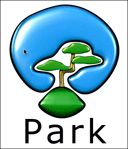
If GTD TiddlyWiki is getting close to what you’re looking for in a GTD solution, Park might be the final answer. It takes the TiddlyWiki idea and localizes it, plus it adds on a few more features. Park is as much a note-taker as it is a task-planner—which, in GTD parlance, makes sense to a degree. The latest version of Park includes Spotlight support, which could be huge. Park is free, and is almost ready for version 1.0, though it is currently in beta at version 0.9.
iCommit
iCommit is another browser-based option, though this one does run online and cannot be locally installed. It is something like a wiki but without the hassle of setting up. It’s gotten a lot of good reviews (see GTD wiz Merlin Mann’s affirming words) but has the downside of being “first-come, first-served” at the developer’s private server. It is currently at version 1.9.0, and it is free if you can get it.
MyTicklerFile
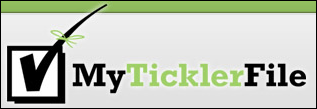
MyTicklerFile is specifically designed to work with GTD—though this one incorporates a broader concept in the GTD system. It has more explicit syncing with iCal (and 37Signals’ Basecamp, by the way), and will e-mail your upcoming tasks to you weekly for a GTD-style “weekly review.” With a “Dashboard” view (think of this as a snapshot of your projects and tasks), a Calendar view, a Single Day view, and a Project view, MyTicklerFile makes it pretty easy to get your tasks and projects organized and then work within them. It costs money for a subscription if you want to manage more than one project or the full set of tickler files: $9/month gets you 15 projects, 150 reminders, and an unlimited number of Ticklers, while $19/month doubles that. You can upgrade or downgrade your plan at any time.
GTDGmail

GTDGmail is a Firefox extension that brings GTD into integration with Gmail. It provides a pre-packaged set of labels for organization, and a faster method for applying them. It also includes a Review process, allows you to save specialized searches within Gmail (sort of like Finder’s smart folders), has a quick-entry method for composing new tasks, and provides a printable format (3×5 index card). The current version, 1.31, is open-source, and obviously requires the (also open-source) Firefox browser to be installed.
30Boxes

30Boxes is an AJAX creation, which means that it is an active application that runs within your browser in the same way that Writely and other similar applications do. 30Boxes is lean and fast, which gives it an advantage over some AJAX apps. It has a calendar, task list, and limited Gmail interaction. It also has RSS and iCal feeds, SMS functions, and sharing with others. The interface is nice, with a familiar feel—it has an OS X-style “dock” on the side to navigate among sections. 30Boxes is in beta and is currently free.
Tasks

King Design’s Tasks is not explicitly designed to be a GTD application. It is GTD-compatible, though, and a free level of service is available. It can work in collaboration with iCal, allowing you to keep a localized version of your projects on your Mac. It will also send you e-mail reminders of the tasks on your list for that day, and can help you track billable time if you need it to. To get permanent function of the regular version requires a paid subscription, or purchase of a server-installed setup. There is also Tasks Jr., a locally-hosted but browser-based system, and Tasks Pro, which is a multi-user, almost “enterprise” version. Tasks is a pretty good step in the right direction for a GTD setup, particularly given its multi-level options. Version 2.6.3 costs $30, while version 1.6.3 of Tasks Pro ranges from $125 to $500. Tasks Jr. is free.
Tasktoy
Tasktoy is a simple interface, but it lets you categorize by context or project. You can also attach notes to tasks. TaskToy is a similar concept to Tasks, with fewer features. Some of the good ideas this developer has include low-resistance task building—one or two clicks in most cases—and repeatable tasks that are easy to set up. He has also built in mobile device compatibility (though not with iSync, but through the mobile service provider’s Internet access). TaskToy is not exactly GTD-specific, but it was designed to be GTD-friendly. It is free, and is currently a beta version, though it’s simply a personal project of the developer, so it may never get out of beta.
Tracks
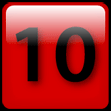
Tracks is another open-source, browser-based solution, though this one comes with a Web server that allows you to run it locally if you prefer—or have it hosted online through tracks.tra.in. Tracks was built with Ruby on Rails, with an AJAX face—meaning it is fast, lean, and pretty. It also means it can be installed on just about any platform. Tracks doesn’t exactly work with iCal, but it does offer calendaring functions—so maybe it could be an iCal replacement for some. It also has a multi-user component, so it represents a great opportunity for GTD implementation across a group or team. Tracks is open-source and currently at version 1.043.
Basecamp, Backpack, and Ta-Da Lists


37Signals’ Basecamp and Backpack are both very capable project managers, and both have iCal integration. Even better, both have varying degrees of localization—Dashboard widgets at least, and PackRat works as a localized companion to Backpack. Some are convinced that Basecamp or Backpack is the final answer for GTD applications. For a simpler scale, you might also check out 37Signals’ Ta-Da Lists, a basic task list manager.
Sproutliner
Sproutliner is a task list with some hierarchy and context management. There isn’t much to Sproutliner, but if you want a straightforward online task list it may be satisfactory. It is open-source, and they say it is “beta” (but they also admit that this is as much compliance with trend as anything).
HiveMinder

HiveMinder has the distinguishing feature of a “brain dump” feature, which is a one-click task creator. It also has RSS feeds, iCalendar feeds, and printing features. It is searchable, shareable, and has a Task Review. You can set it up to e-mail your tasks to you. HiveMinder is free, but ad-supported; they plan to offer a paid-for version in the future which will eliminate the ads.
Remember the Milk

Remember the Milk offers as many input and output options as any online task manager available: you can receive tasks and reminders online, through e-mail, SMS, RSS feed, Web-enabled PDA or smartphone, and a wide array of instant messenger protocols. Create tasks through e-mail, even from a mobile phone. Create recurring tasks, use tags to organize tasks, and use the map feature to organize the execution of your tasks. Some have brainstormed about using Remember the Milk for GTD. Remember the Milk is free.
Gmail and Google Calendar
And then there are the more general-purpose online tools by our friends at Google, Gmail and Google Calendar. Gmail has been adapted into a GTD system and even improved upon. Similar work has also been done with Google Calendar.
Local, Stand-Alone Applications
Thinking Rock

Thinking Rock follows the GTD model closely, with a distinct operation for each of the three main steps (collect, process, review-plan-do). Thinking Rock has an interactive collection process, allowing you to enter all of the items manually instead of finding them for you, which is both blessing and bane—after all, manual entry of all of your projects is a lot of work, and is sometimes redundant. One big thing I like about Thinking Rock is that it is easy to enter lots of new tasks at once: the collection stage is as simple as typing a brief description, then tabbing or pressing Return a couple of times to a new line. It also has the nuance of being a Java application, making it very portable: you can install Thinking Rock onto a flash drive and use it on any computer, any platform. Because it’s Java, it doesn’t feel like a Mac application—but neither does it have the clunkiness or sluggish operation that many Java applications have. At version 1.2.3, Thinking Rock is established and bug-tested.
Midnight Inbox
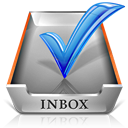
Midnight Beep has been working hard over the past few months to get Midnight Inbox out the door; it’s currently at version 1.0.5, with a price at $35. Inbox is a top-to-bottom implementation of the GTD system. What is more, Inbox is a well-designed application with a beautiful Mac-like interface, and I’ve been assured that iCal integration is on the way. Inbox is sort of a “meta-application”: it gathers events and tasks from iCal, messages from Mail, and other documents, bookmarks, notes, and other files and allows you to process them through the GTD model—collect, process, review-plan-do. It gathers them on its own, by the way—which is both blessing and bane; to build a project from scratch requires going through iCal, Mail, etc. You can monitor your progress, archive projects that are completed, and organize your work patterns. In a way, Inbox represents your personal David Allen coaching you through your projects; there are a handful of nice features, like the processing timer, that help a serious GTDer keep focused. One thing Inbox gets right that the others sort of miss: GTD is more than mere task management, and Inbox’s “meta” quality addresses this more thoroughly than any other available application. But this may be more function than you need in a task-management environment, and if so then Inbox may feel a bit over-done.
KinklessGTD
KinklessGTD is one of the original GTD “apps,” although it isn’t itself an actual application. Rather, KinklessGTD (kGTD) is an elaborate template and AppleScript set built by Ethan Schoonover for OmniOutliner Pro. kGTD takes full advantage of the outliner’s ability to make greatly detailed lists, and allows hierarchical project organization to flow. As with most GTD systems, kGTD allows you to view by Project, Context, or Next Actions. It syncs with iCal after some modest setup, and also can receive input through Quicksilver; thus, it also has an Inbox view that lets you organize those stray tasks that haven’t yet been placed into a project or context. Through a bit of finagling and the help of Mail Act-On, it’s possible to have kGTD indirectly sync with Mail; but more on this in another article.

kGTD has captured the love and affection of some big names, including Merlin Mann, who has written a number of posts on mastering the FU of kGTD, and inspired the Omni Group to begin building OmniFocus, which is due out sometime this year. Still, KinklessGTD is a little buggy, and it’s unlikely that Ethan will build another version, since he is apparently working with Omni on OmniFocus. Thus, it may be that the current version, 0.83, is all we get—which will be plenty for some, but not for everyone. KinklessGTD is free under the GNU public license, though it requires purchase of OmniOutliner Pro (no, it won’t work with the free copy of OmniOutliner that came on your Mac), which costs $70.
Frictionless
If the name Frictionless sounds like a play on the KinklessGTD name, you’re spot-on. It was developed as a stand-alone rendition of Kinkless, with a goal to create the same basic tool-set of an outliner/task-planner. As such, the developer included the ability to import projects and tasks from Kinkless GTD. Frictionless is possibly the most thoroughly GTD of all of the GTD applications. It is fairly easy to collect and gather, and new tasks go immediately into a flat file of actions. These can be organized into subsets of each other, creating a hierarchy of projects and sub-projects. A lot of this can be done via keyboard or mouse, so that proficiency with the system could mean very fast organization of new projects.
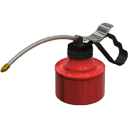
A Next Actions window is ready to give context-specific counsel about tasks, and the This Week window allows for very easy weekly reviews. David Allen would be proud. Frictionless also has Quicksilver integration, which instantly moves it up a notch or two for many hardcore Mac users, and, frankly, for a lot of GTD Mac folk already adapted to Kinkless. And it has an AppleScript that allows an action to be created directly from Mail. Frictionless lacks the ability to sync with iCal, but this may be covered by the Quicksilver and Mail actions, and the developer promises that it is on the way.
When you open Frictionless, a lot of windows show up at once; no fewer than four windows have a regular function in the application. It’s easy enough to Command-tilde through them, and each of them has a Command-# hotkey assigned. Still, it seems like a lot of windows to me, even though each has a specific and important function in the GTD system. While the application generally feels very Applicious, the large number of important windows makes Frictionless feel a little cluttered. The current (free) version is 0.8.4, and it hasn’t been updated in a while; hopefully we’ll see more from Frictionless very soon.
Ready-Set-Do!
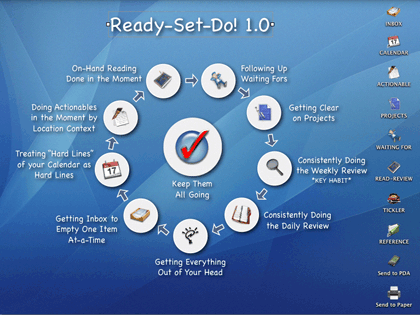
Ready-Set-Do! is a fair departure from the rest of the GTD applications. Rather than function as a task manager per se, Ready-Set-Do! functions like a virtual version of the paper method of collecting, processing, and review-plan-doing. Ready-Set-Do! is an extensive set of AppleScripts that transforms your Mac’s desktop into a GTD processing station. It integrates with iCal nicely, and allows a “whole system” approach that isn’t possible with any of the other GTD applications—only Midnight Inbox comes close. For those who can handle a true paperless office, Ready-Set-Do! may be the one-stop solution. Currently in version 1.0, Ready-Set-Do! costs $20 for a single-user license.
Action Tracker
Action Tracker isn’t exactly a stand-alone application; instead, it is a FileMaker Pro document. But it is a well-designed GTD environment. Action Tracker is, like Inbox, more than simply a task manager; instead, it serves as an interface for your project management. In addition to a very complete task and project management element, it also organizes notes, contacts, and other files related to the project, and it can create iCal events as well. Jumping between entry mode and list-view mode is easy, and an added bonus is that it has a 3×5 card printout function—any item or list can be dumped onto an index card. Action Tracker 1.3.1 is free, and if you don’t have a FileMaker Pro license, a runtime version is available.
Actiontastic
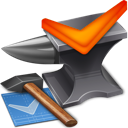
Though still in beta, Actiontastic is a simple yet capable task manager, and an ultra-thin one at that. Actiontastic is, like many betas, a fairly bare-bones application that the developer wants to make something more of, though recent beta releases are considerably less “bare-bones.” As it is, three tabs offer you views of the inbox, projects, or contexts. Creating a new item in the inbox allows you to enter a line of text, then select whether it is an action or a project; you may utilize the Inbox tab as a collection of sorts, and a “Process Inbox” engine will help you through the processing phase. There is also a Quicksilver plug-in, and Actiontastic will sync your tasks to iCal or an iPod. Future plans include printing/other export methods. The beta version is free, with a stated expiration date. It is currently at version 0.9b.
EasyTask Manager
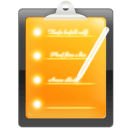
OrionBelt’s EasyTask Manager rounds out the list of explicitly GTD applications. EasyTask Manager is another stand-alone application that has some maturity, with version 1.7.6 available for $20. EasyTask Manager is well-named: it manages only tasks, and it does so easily. It has a lot of heavy GTD influence, though (unlike Inbox and Frictionless) you could certainly use it if you weren’t familiar with the GTD system. Tasks can be sorted by project or category, and they can be assigned due dates, priorities, and notes. It will sync with iCal, either by only importing tasks from iCal or by a bi-directional sync. A calendar function makes it easy to perform regular daily and weekly reviews, and heavy drag-and-drop ability makes for easy sorting and categorization in process stage.
Ghost Action
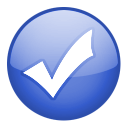
Ghost Action from Ghost Park Software sports a simple, single-window interface with tabs for Contexts, Projects, and Actions. Ghost Action will sync with iCal and .Mac, and will also sync with a PDA or phone through iSync. Still in beta (1.0b13), the developer is planning to include printing, a unified look (currently showing brushed metal), and a more general Inbox implementation.
Mori
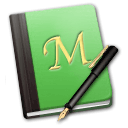
Those looking for a note/document organizer as well as a GTD application might appreciate Hog Bay Software’s Mori along with the mGTD plug-in. Mori is one of a handful of “digital notebook” applications, complete with Spotlight functionality, AppleScriptability, and a growing collection of plug-ins to make research, writing, or project management easier. The mGTD plug-in brings a thorough GTD system into Mori, though it does not sync with iCal. The mGTD plug-in (current version: 1.2 “pre-final”) is free, but Mori (current version: 1.4) will cost you $40.
Life Balance

Llamagraphics has one of the most mature task-management applications, Life Balance. Currently at version 3.2.9, Life Balance offers a sort of “meta-feedback” about your tasks: how much time are you spending in different areas of your life (i.e., work, family, hobbies, etc.), and are you keeping it balanced? Experienced GTD users might point out that this is a fairly high-level GTD checkpoint. Life Balance also has the benefit of being developed for Mac OS X, Windows, and the Palm OS, so you could conceivably have it with you in nearly any circumstance, even if your work computer is not a Mac—though this would not be a necessary benefit if Life Balance were not a completely closed environment, without iCal integration. Still, Life Balance is a popular and established option, if not explicitly designed for GTD. Life Balance for the Mac costs $65, or $80 if bundled with the Palm OS version.
ZooDo
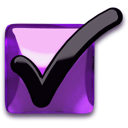
ZooDo is a basic task-creator for iCal. It is a stand-alone application, but it serves as the “collection bucket” of sorts. Certainly helpful in the gather/collect stage of planning, ZooDo is particularly friendly to those who prefer keyboard interaction to a mouse/keyboard combo. Some folks have brainstormed about how this makes GTD easier, particularly with regard to further integration with Backpack.
ToDo
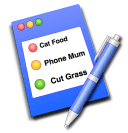
ToDo is a free, basic to-do list application. Designed to integrate into an existing workflow, ToDo is low-profile but still packs a fair amount of punch. Quicksilver users can utilize a ToDo plug-in to quickly enter new tasks, and limited integration with Address Book and iCal means that some redundancy is reduced. .Mac support means that you can sync ToDos on multiple Macs, and AppleScriptability allows creative integration with other applications. ToDo also supports file attachments, so if there is something pertinent to a particular task it can be linked. Categories of lists allow ToDo to serve particular contexts, and ToDo generally is GTD-friendly, but is not specifically aimed at GTD users.
High Priority

High Priority is a system preference pane and creates a menu item in the menu bar. With High Priority, you can create and update your iCal tasks. High Priority is currently at version 1.11 and costs $6 for a personal license (family and business licenses are also available).
iClock
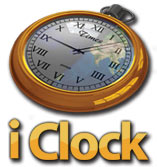
Another utility similar to High Priority is Script Software’s iClock, which actually brings a host of new services and functions with it. iClock doesn’t have iCal interaction, but it does offer a menu bar-based method of managing task lists. iClock is at version 3.0.5 and costs $20.
To-Do X
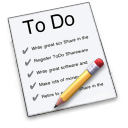
To-Do X is another stand-alone task manager, and while it will import tasks from iCal, it has no further interaction with it. To-Do X offers a number of good features for a task-manager, including categories (which could double as “contexts”), priorities, and attached notes. To-Do X also imports from the Classic OS Desk Accessory ToDo!. Version 2.1 costs $15.
Stapler
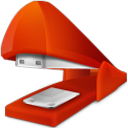
Stapler is a combination of a basic notepad and a to-do list manager. It is very simple in orientation: creation date, notes, and a check-box for completed items. Tasks can be color-coded based on a low-level preference setup. Stapler is not really designed for GTD, but it could work for the right user. €7.50 (about $9.70) gets you version 1.1.
What’s Next
In the next few articles, I’ll work through the “essential” features of a GTD application according to the canonical system, and consider which of these is redundant elsewhere (and therefore possibly optional). I’ll talk about different workflows and how the varying GTD apps fit into them. And I’ll discuss some of the larger-scale project managers, such as Jumsoft’s Process2 and the OmniGroup’s OmniPlan.
Also in This Series
- The Last Action · May 2012
- Master List, April 2011 · April 2011
- GTD for iOS/iPad · February 2011
- E-mail Tricks and Tools · August 2010
- Master List, May 2010 · May 2010
- Inbox Overload · April 2010
- Master List, February 2010 · February 2010
- Getting Back on the GTD Wagon · December 2009
- Master List, June 2009 · June 2009
- Complete Archive
Reader Comments (49)
Don't forget Merlin Mann's hipster PDA. Although decidedly low-tech, it offers independence from more technological approaches and works with only a pencil/pen, a few index cards, and a small binder clip! :)
Ed, consider subscribing to this group:
http://groups.google.com/group/macintosh_pims?hl=en
And consider mentioning it in the article(s) as it is a great place for Mac users to talk to each other about PIMs.
It seems ATPM will never please everyone. If the web page text is too small, we get complaints. Now, there's this complaint that it's too large. I think we'd prefer to side with legibility, hence the slightly larger type. You could, of course, hold the Command key and tap the minus key to reduce the size—at least I know this works in Safari—or download and read the Acrobat files which use a bit smaller text.
DB-- your comment about the list is something I've already considered, and rest assured that future articles will not devote quite so much room to each app/solution. A concise list at the end of the article will summarize.
Also, regarding HipsterPDA/DIYPlanner/etc., as much as I admire these solutions for their analogical elegance, they are certainly not software solutions. Thus, they factor out of the categories I'm looking to cover, namely, A) software tools and B) Mac-specific tools.
I'm looking forward to developing this. Thanks for reading.
I think it is fair to say your site is the only one (that I read) with such large text.
Ed, I look forward to the more systematic review. I'd actually suggest a short list and description on the front end, and then links to the longer descriptions.
I know it is hard to pigeon hole these apps into meaningful groups.
Thanks again. This is a really nice thing you have done for those looking for the GTD approach that will work best for them.
Todd V
Ready-Set-Do! Creator
As some of you may know I am trying to compile (and keep up to date) the Ultimate GTD Index at gtdindex.marvelz.com.
For people who are only looking for a simple list of hyperlinks to GTD apps (but NO reviews, yet) check out the GTD Index. It will also keep you informed about the latest posts on many GTD blogs out there!
Because as has been remarked above, the GTD landscape is growing every day and it becomes harder and harder for GTD enthusiasts/professionals to keep track of all the relevant and interesting information about GTD.
Enjoy!
-gtdfrk
Keep up the good work. We who enjoy long, informative articles, and have attentions spans exceeding that of a five year old on crystal meth -- are happy to have you around.
http://www.sailalong.com/Default.aspx
From the 5 yr old meth head ;-)
http://bargiel.home.pl/iGTD/
It has Quicksilver integration, growl support, and a search engine among other things. And I believe it's donationware.
I myself have created one - Nexty
www.nozbe.com
Let me know what you think.
I will say that, considering that it's been featured on 43folders more than once, iGTD really should be included here.
Piminnowcheez, you'll find that iGTD was covered in my third column, not long after it became available. It is impressive, and I can tell that many people are finding it quite useful. Since it wasn't around in January (when I wrote the piece you commented on) it didn't make the list. My skills as a futurist are still being honed-- sorry!
Ted-- you might be interested in seeing more recent columns, as the list continues to evolve.
Hakon-- I just recently saw where an Emacs GTD solution was available. Could you point me (links, man, links!) to where I can track this down?
Let me be plain and clear: I am aware of iGTD, OmniFocus, and a large (and growing) number of other more recent offerings. However, if you will please take note of the date of this article--February 07, which practically speaking means that the article was submitted in late January-- you might reconsider whether you feel the NEED to mention these and others.
iGTD has been covered in later articles in the column. The Omni Group is aware of my column, and has not provided me a copy of the beta-- so I can't really say much about that app. Neither of these, however, were available in January or early February, when this column was published.
In short: I am quite aware of how quickly this list has become outdated, and I have (to a reasonable degree) addressed it in later columns. Therefore, please don't leave any more comments about how incomplete this list is; or if you do, don't expect me to respond.
Looks awesome! Seems like OmniFocus is getting some real competition here.
My advice is read the book first, begin with the simplest and most flexible tool possible, and start tweaking your system only when you got used to the way it works for you.
My simple solution to start with was a plain OmniOutliner outline (I love it's flexibility), but others may prefer plain-text file, paper notebook or stack of index cards.
Toodledo is web based is the best when using multiple PCs both at work and home.
Many other features that I feel should rank it very high.
After searching and trying many applications...I have settled now for some time on using Toodledo.
http://www.gtdagenda.com
You can use it to manage your goals, projects and tasks, set next actions and contexts, use
checklists, schedules and a calendar.
A mobile version is available too.
As with the last update, now Gtdagenda has due date for tasks (you'll see in the calendar on the right if you have tasks due today), task notes, and Email & Print support.
Hope you like it.
There are some features I am missing, but the I like the simplicity and speed of this application.
I have requested that further comments on this article be closed; please check the Next Actions archive for a more recent article and make your comment there. Thank you!